Introduction
Human population across the globe has attempted to develop close relations with each other over the past centuries. The close contact has been necessary for promoting various social and economic developments, resulting into interdependency among different regions in the world, which is important for economic growth and social integration (Global Policy Forum, 2011).
This has been accelerated by better policies and the technological developments that have been recorded in the past; for instance, information technology such as the internet has made access to different parts of the world easier, faster, and efficient (The Levin Institute, 2011). The coming together of different social, economic, and political systems across the globe can be termed as globalization (Global Policy Forum 2011; The Levin Institute, 2011).
According to The Levin Institute (a division of the State University of New York providing professional education and public engagement) (2011), globalization is a “process of interaction and integration among the people, companies, and governments of different nations, a process driven by international trade, and investment aided by information technology.” It involves integration of the business functions of an organization with the global market forces like customer needs (Keillor and Kannan, 2011, p.223). Globalization has been associated with foreign direct investments. The volume of world trade has increased over 20 times since the beginning of the second half of twentieth century. Between 1997 and 1999 alone, the foreign direct investments increase by almost 100% from $468 billion to $827 billion (The Levin Institute, 2011).
Large multinational enterprises operate business in different countries in the world. The companies manufacture products in several countries in which they are established and sell the products to their consumers across the globe. Globalization has impacts on the culture, environment, economy, political system, and the health and physical wellbeing of the individuals involved across the globe (Huynan et al, 2005). Globalization has been enhanced by initiatives by different governments of promoting international trade by removing barriers to such trade like tariffs and export/import duties, and instead, developing international trade policies (The Levin Institute, 2011). Many countries have liberalized their trade policies to allow for foreign investors into and out of the country.
Automotive industry has witnessed globalization in the past and this is bound to accelerate at even a higher rate in future, with both negative and positive impacts expected. Firstly, it leads to new markets, whereby, firms are able to locate new markets across the globe with lower production costs, for example, regions with cheap labor and raw materials. Secondly, it enhances transfer of finances, culture, technology, and ideas across different regions of the world (Global Policy forum, 2011).
However, globalization has negative impacts on the environment and health of the members of society. Firstly, in the automotive sector, globalization is characterized by various transport systems that emit harmful substances that damage the environment and are harmful to the human health. Secondly, it can enable one country to exploit the resources of another country, posing economic challenges to the latter. This will not only reduce the living standards of such individuals but also lead environmental degradation. Similarly, it may lead to a disorganized economy. For instance, the 2008 global economic crisis was greatly attributed to the deregulated global economy (Global Policy forum, 2011).
The crisis, in turn, had serious impacts on international business (Global Economics Crisis Resource Center, 2009, p.18). Globalization can also promote political oppression of one country by a more powerful country, due to increased interaction and interdependency that thwarts a nation’s ability of self-governance (Homann et al, 2007, p.4).
Nissan Motor Company is one of the players in the global automotive sector. The company entered an alliance with Renault in 1999 and the two have been conducting their marketing sales together. By 2005, Renault had 45% stake in the company (Company Spotlight: Nissan Motor Co Ltd, 2007, p.17). They currently have a combined market share of over 9% of the global automobile market (Datamonitor: Nissan Motor Co Ltd, 2011a, p.5). The Japanese automotive manufacturer deals in a variety of vehicles and other automobiles and competes with the global giants like Toyota, Honda, Ford Motors, and the General Motors (Datamonitor: Nissan Motor Co Ltd, 2011a, p.10).
The company has witnessed increased sales especially in the US this year (Bloomberg, 2011). This paper provides an analysis of the impacts of globalization in Nissan Motor Co and the strategies that the company has put, or is planning to institute, in order to manage these impacts.
Health issues related to globalization of Nissan Motor Company
Globalization has serious health challenges. Generally, globalization has the effect of “increased internationalization of health risks” (Pang and Guindon, 2004). The impacts of globalization on the economic, political, and social development in a society are extended to the health and well-being of the members of the society. However, its exact impact on the developments in a given country depends largely on the conditions prevailing in the recipient countries (Velde, 2005). It could reflect on the accessibility of social amenities in the society like schools and health centers or access to necessities like clean water supply. The globalization of the automotive sector has even more negative impact on human health, mainly through air pollution. Previous researches have indicated that outdoor air pollution is harmful to human health and that transport sector contributes significantly towards this pollution (World Health Organization, 2005).
Toxic emissions from the road and air traffic have been a serious challenge in the United Kingdom in the past years. The transport sector contributes significantly towards air pollution with the automobiles being one of the main sources of this pollution (Anon, 2011). About 36% of the total benzene emissions in the UK in 2001 were attributed to the road traffic (Nicolopoulou, et al, 2006, p.249). Equivalent rates were recorded for emissions of other toxic substances resulting from the road traffic. This raised a national alarm since these substances cause health problems like Carcinogenicity, memory loss, and reproductive impairment (Tiwary & Colls, 2010, p.40). In effect, the Department of the Environment Food and Rural Affairs (DEFRA) has developed environmental management policies in line with the EU regulations on emissions. The companies operating within these regions have to observe the regulations. Nissan Motor Co has gone international in its operations and thus it has to abide by the regulations within the UK and in the EU countries.
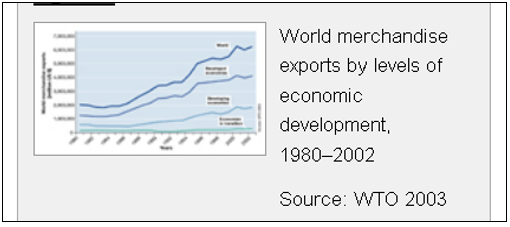
In response to the need to reduce emissions to improve on human health, the company has developed different models of automobiles over the years that have lower fuel consumption with reduced gas emissions. The company has emphasized on the use of biofuel in it automobiles and other company operations, as well as introducing new models of their automobiles that can operate on a combination of this biofuel and the fuels from petroleum products.
For instance, in Japan, the company has introduced 100% electric, zero-emission models (Company Spotlight: Nissan Motor Co Ltd, 2011b). One of the significant movements was the release of diesel powered and hybrid cars introduced by the company in the last decade. The hybrid models use a combined power source of electricity in the high voltage battery and gasoline in the fuel tanks to ensure low fuel consumptions and reduced emissions (Nissan Altima Hybrid, 2010). The first hybrid model that was introduced is Nissan Altima Hybrid, first released in North America in January 2007. The model applies the different sources of power to drive the vehicle depending on the driving conditions. When the vehicle accelerates at low speeds, it is driven by the traction motor whereby the gasoline engine is not used (Nissan Altima Hybrid, 2010).
This explains its efficiency in fuel consumption. When under normal driving conditions, the gasoline engine is used whereas a full acceleration requires the application of both traction motor and gasoline engines (Nissan Altima Hybrid, 2010). These power sources are also not used when the vehicle is decelerating or stooped.
The efficiency of these hybrid vehicles and the high costs of production can force the organization to increase the price of such automobiles. The hybrid vehicles are often priced higher than the conventional gasoline engined vehicles (HiCow, 2011). The hybrid engines do quite will in the United States. However, in the clean diesel engines do better in the European market (HiCow, 2011). To promote environmental management and capture the market at the same time, Nissan Motor Co released diesel-powered vehicles that it has purposed to extend to the United States. The models have been available in the Asian and European markets. The company has collaborated with another French-based auto manufacturer Renault to release clean diesel engines that meet the standards of emissions required (Global Environmental Planning Office, 2009). The company has developed different models of these vehicles like the X-Trail 20GT that was released in 2008 (Global Environmental Planning Office, 2009).
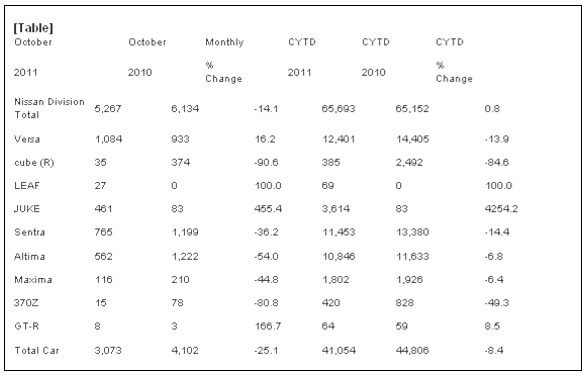
Even though the developments of new models may be costly through different research and development innovations, the company can count on the strategies to have increased profitability of the years through increased recovery rate of materials. The company has achieved the preset goal of 95% recovery of materials in different regions like Japan and Europe (Global Environmental Planning Office, 2009). Besides, the general positive image that the public develops of the organization that has concern for environmental management is significant for improved sales
Environmental Issues related to globalization
In as much globalization has been considered part of the contemporary business environment, this new development of the second half of the twentieth century has certain challenges. The environmental challenges associated with globalization are mainly experienced in the developing world where the problems outweigh the benefits. It has been noted that globalization has associated negative impacts on the human health in the societies involved. The environmental impacts of the operations of a given organization have effects in its success (Pearson, n.d, p.1). There are environmental conservation initiatives developed on the local and international scene that advocate for the global environmental management.
Nissan Motor Co Ltd started showing concern for the environment from the late 1940s and several initiatives have been witnessed since then. The company’s environmental concern was first witnessed in 1947 when it introduced Tama, the first electric vehicle by the company (Global Environmental Planning Office, 2009). The company was responsive to the regulations imposed by different environmental management authorities in different countries where it is established. This was evident in 1970 when it complied with the Clean Air Act (Muskie Act) (Global Environmental Planning Office, 2009). Environmental management and the effects of its operations on the environment became one of its fundamental policies. In 1992, the company developed its philosophy on environmental management, “Symbiosis of People, Vehicle, and Nature” (Global Environmental Planning Office, 2009).
The company continued, at different stages, to reduce the CO2 emissions by its automobile products. In 1997, it released Prairie Joy EV, which was the first electric vehicle with lithium-ion battery in the world (Global Environmental Planning Office, 2009). The automobile powered by this system has reduced CO2 emissions as much power is derived from the electric motor (Nissan, 2010). In the same year, the company received its first ISO 14001 certification. Another milestone was seen in 2000 when the company released Hyper Mini, a super-compact electric vehicle. The company also produced a gasoline-fueled vehicle in California, the first of this kind that had the recommended rates of emissions of toxic substances (Global Environmental Planning Office, 2009). The gasoline-powered engines produced the same levels of emissions as diesel engine.
This was a reduction of 20% in CO2 emissions for the earlier engines of this type (Nissan, 2010). In 2006, the company launched the Nissan Green Program, an initiative that incorporates environmental conservation measures in the auto manufacturing process (Nissan, 2010). The company was also recognized as an Eco First company in Japan due to its innovative ability and commitment to environmental management (Global Environmental Planning Office, 2009). Presently, the company is operating under the five-year plan termed NISSAN GT 2012, a plan that will see the company emerge as the leader in zero-emission vehicles and highly developed electric vehicles (Global Environmental Planning Office, 2009). This plan was established in 2008.
The US Environmental Protection Agency has positive relations with Nissan Motor Company after they solved a row that emerged following the company’s breach of various legislative provisions between 2004 and 2009 (US Environmental Protection Agency, n.d). The US EPA has since applauded the company’s efforts to environmental conservation and management. In 2010, EPA gave out the fuel economy ratings for the Nissan Leaf electric sedan, one of the automobiles designed to reduce fuel consumption and the resulting gas emissions (Bullis, 2010). The environmental agency affirmed that the automobile ‘was the best in its class in terms of fuel economy’ (Bullis, 2010, para.1).
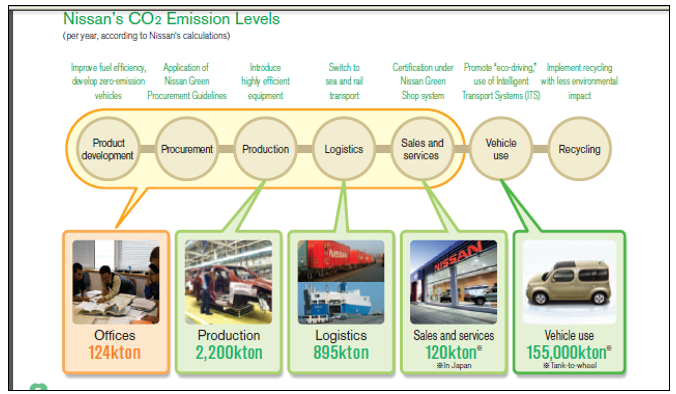
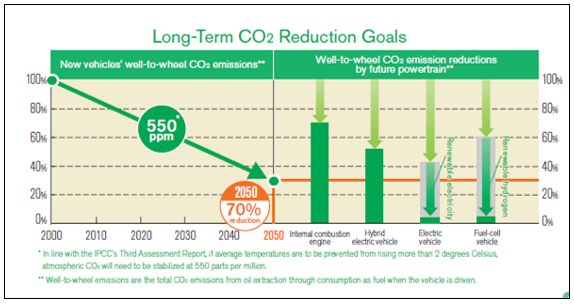
The company is focused on improving the efficiency of its car models and their fuel consumption. It is committed to developing car models that have low fuel consumption with reduced emission of the substances harmful to the environment. The goal of the company is to have a 70% reduction in CO2 emissions by 2050 (Global Environmental Planning Office, 2009). In the recent past, the company has been engaged in the development of electric cars, plug-in hybrid cars, hybrid cars, and fuel vehicles as a strategy to achieve these objectives of environment management (Nissan, 2010). It is concerned with its operations now and for the generations to come.
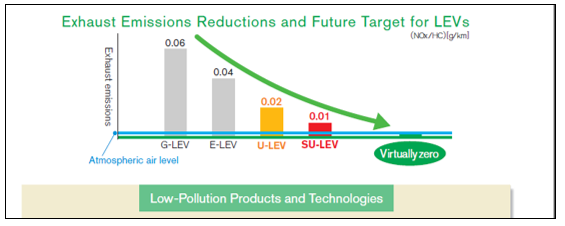
The company has recorded evolution in the engine technology as well as transmission systems to reduce fuel consumption and subsequent emissions. This was first seen with the introduction of flexible-fuel vehicles that can run on different fuel compositions. The company began by E10 that used 10% bio-ethanol fuel, then E85 (using 85% bio-ethanol fuel, and finally E100 (100% bio-ethanol fuel) (Nissan, 2010). Models such as the Nissan Livina developed in Brazil in 2009 were an E100 flexible fuel vehicle (Data Monitor, 2011a). The blending enables proper oxygenation of the fuel mixture that can reduce toxic emissions.
The company developed automobile models with Continuously Variable Transmission as an improvement on the regular automatic transmissions. The cars with this transmission system had about 10% fuel conservation of the automatic models. The models also had high rates of sales with approximately one million units being sold annually on the globe scene (Nissan, 2010). The hybrid electric vehicle has a combined system of power: a gasoline engine and electric motor. This leads to reduced consumption of fuel and a subsequent reduction in CO2 and other emissions (Nissan 2010). The technology was further improved and the company developed a plug-in hybrid car.
This model uses a battery stack that can be recharged easily. The improved system emits no CO2 when it is operating on the electric motor, just like the electric vehicles (Nissan, 2010). The company has also launched a six-year environmental plan aimed at reducing carbon footprint, moving to renewable forms of energy and increasing diversity in the resources used by the organization (Green Car Congress, 2011).
The company is also concerned with water conservation. It has developed initiatives in different plants to recycle water used in washing the vehicles before painting. This was evident at its plants at Barcelona, Spain that saw a reduction of 20% of water usage in 2007 (Martin, 2008). The initiative yielded similar results in the previous years and is expected to continue cutting down the water consumption by the organization. This initiative has since been adopted by the other establishments of the company in different parts of the world.
Conclusions
Globalization is a phenomenon that is there to stay and yet it has its challenges. The challenges posed by globalization are often heavier than the positive impacts, especially in the developing countries. The remedy, therefore, is not to provide critique to the phenomenon but to develop strategies to overcome these challenges. This calls for development of local and international policies that govern global activities like international trade.
The automotive sector is among the sectors that have gone global in operations. With the increased globalization of operation in this sector, there have been associated health and environmental challenges. The release of toxic hydrocarbons from fuel combustion contributes to serious problems as witnessed in different parts of the world. Indeed, the release of green house gases by the automobiles has an affect on the global environment.
As a key player in the automotive sector, Nissan Motor Company has realized the serious environmental and health challenges caused by the globalization of their operations. In effect, the company has developed various initiatives aimed at promoting health and reducing damage to the environment. The company has initiatives like development of flexible-fuel vehicles that can operate on different compositions of fuel. There are also initiatives to develop models that can operate on renewable sources of energy to save the depletion of non-renewable energy associated with toxic emissions. The company also has water conservation measures to reduce water consumption in its various plants across the globe. This involves the recycling of water used in clearing the vehicles before they are painted.
Recommendations
- The company should stay focused on the management of the challenges imposed by globalization that can thwart its operations.
- The company should invest more on research and development to achieve the objectives of reducing emissions and improving efficiency and economy for its automobile models.
- It should be focused on the environmental management initiatives by conducting further research to ensure zero emissions of toxic substances.
- The company should stay focused on the management of health of its workers through ensuring the working conditions are favorable. The insurance cover for the employees and their dependants should be waived as a motivation to the employees.
- The company should abide by the legislative provisions developed by the different levels of government concerning environmental management. The company also needs to develop organizational policies to be observed by the members aimed towards the environmental conservation.
Reference List
Anon. 2011. Weather explained: Air and Water pollution. Weather Almanac, Vol.1. Web.
Bloomberg. 2011. Toyota, Honda Lose Market Share in September U.S. Sales Rebound. Web.
Bullis, K. 2010. EPA says Nissan Leaf Range is 73 miles. Web.
Company Spotlight: Nissan Motor Co Ltd. 2007. Market Watch Roundup, 6(8); 23-27. Web.
Datamonitor: Nissan Motor Co Ltd. 2011a. Nissan Motor Co Ltd: SWOT Analysis, pp. 1-11. Web.
Global Economics Crisis Resource Center. 2009. Global Economic Crisis: Impact on International Business. OH: Cengage Learning. Web.
Global Environmental Planning Office. 2009. Nissan Motor Co., Ltd- Nissan Green program. Web.
Global Policy forum. 2011. Globalization. Web.
Green Car Congress. 2011. Nissan announces Green Program 2016; targeting cumulative sales of 1.5M zero-emission vehicles across Alliance; new fuel cell electric vehicle with Daimler, new Nissan PHEV. Web.
HiCow. 2011. Nissan to Introduce Diesel Powered Maxima. Web.
Homann, K. et al. 2007. Globalization and business ethics. Hampshire: Ashgate Publishing. Web.
Huynan, M. et al. 2005. The health impacts of globalization: a conceptual framework. Globalization and Health, 1(14). Web.
Keillor, B., & Kannan, V., 2011. International Business in the 21st Century, Volume 1. Santa Barbara: ABC-CLIO. Web.
Martin, K., 2008. Car giant cuts 21m liters of water. Web.
Nicolopoulou, P. et al. 2006. Environmental health impacts of transport and mobility. Dordrecht: Springer Science & Business. Web.
Nissan Canada Inc. Announces October Sales Results. 2011. Canada NewsWire. Web.
Nissan. 2010. Nissan Green Program 2010. Web.
Nissan Altima Hybrid. 2010. First Responder’s Guide. Web.
Pang, T., & Guindon, G., 2004. Science & Society. EMBO Reports, 5; S11-S16. Web.
Pearson. N.d. Environmental Management System. Web.
Tiwary, A., & Colls, J., 2010. Air pollution: measurement, modeling and mitigation. 3rd Edition. New York: Taylor & Francis. Web.
The Levin Institute. 2011. What Is Globalization?. Web.
US Environmental Protection Agency. N.d. Administrative Settlement Agreement Policy Determination. Web.
Velde, D., 2005. Globalization and Education what do the trade, investment and migration literatures tell us?. Web.
World Health Organization. 2005. Health effects of transport-related air pollution. Web.